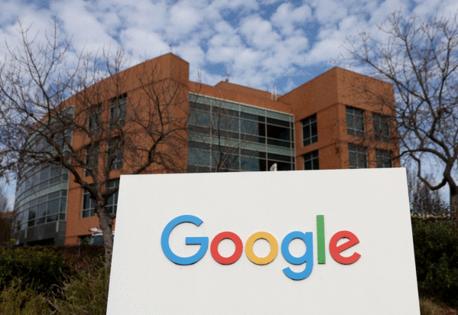Google places ads inside chatbot conversations with AI startups
Published in Business News
Google’s ad network has begun showing advertising within the flow of conversations with chatbots — part of Alphabet Inc.’s efforts to keep its edge in digital advertising as generative artificial intelligence takes off.
Earlier this year, the Google AdSense network, which traditionally displays ads in search results and in the margins of websites, has expanded to include conversations with chatbots operated by AI startups. Google made the move after conducting tests last year and earlier this year with a handful of startups, including AI search apps iAsk and Liner, according to people familiar with the matter who asked not to be identified discussing private information.
Showing ads alongside its own search results is the heart of Google’s business, bolstered by a business that serves up advertising across much of the web. That empire has come under threat as new entrants like OpenAI and Perplexity AI seek to siphon off the search giant’s audience with products aiming to help users find what they are looking for more quickly.
As Google invests heavily to protect its lead, finding the best way to monetize generative AI will be crucial, said Tomasz Tunguz, a general partner at Theory Ventures.
“Feedback loops are incredibly important,” Tunguz said. “Having greater visibility into what’s working” is essential to success.
A Google spokesperson confirmed that “AdSense for Search is available for websites that want to show relevant ads in their conversational AI experiences.” Startups iAsk and Liner declined to comment on their relationship with Google.
Regulators are increasingly scrutinizing Google’s influence over the advertising economy that underpins the open web. Google Search, an industry juggernaut, yielded more than $198 billion in revenue in 2024, almost 60% of Alphabet’s annual sales. In April, a federal judge found that the Alphabet unit violated antitrust law in the markets for advertising exchanges and tools used by websites to sell ad space, known as ad servers.
The company has argued that it has a dominant position because its tools are effective and easy to use. Now, with its burgeoning business relationships with startups, Google aims to profit even if its share of the search market dwindles.
Running experiments with AI startups will allow the company to test the waters for advertising in the relatively new world of AI chats. Generative AI startups are increasingly exploring advertising-based business models to offset the high costs of answering users’ questions with artificial intelligence. For example, before inviting users to ask follow-up questions, iAsk shows ads below its AI-generated responses. In addition to Google, startups such as Koah Labs have begun allowing brands to serve ads to the chatbot audience.
AI search startup Perplexity, one of the most prominent players using AI to reshape internet services, establishes relationships directly with brands that want to buy ads on the site, according to a person familiar with the matter. Perplexity allows brands to sponsor follow-up questions to users’ queries.
To keep its product accessible for students, a key audience, Liner has focused on delivering a select number of ads tailored to users’ searches. People using generative AI tend to click on fewer links — which may pose challenges for startups seeking to make money through online advertising, where brands often pay per click. But Liner users, who come to the site for research, often click on links, and the longer queries allow for more targeted advertising, Chief Executive Officer Luke Jinu Kim said in an interview.
With its advertising, Liner is trying to achieve something that is “more like a very early version of Google search ads,” Kim said, adding that he hopes the site will show a small number of ads that are highly related to the query.
©2025 Bloomberg L.P. Visit bloomberg.com. Distributed by Tribune Content Agency, LLC.












Comments